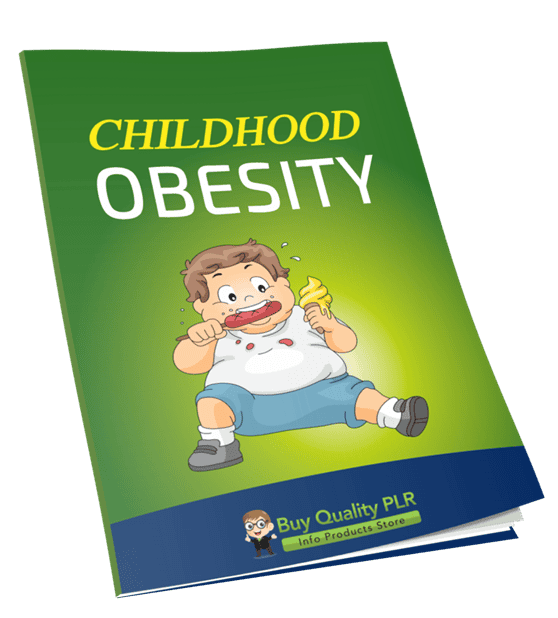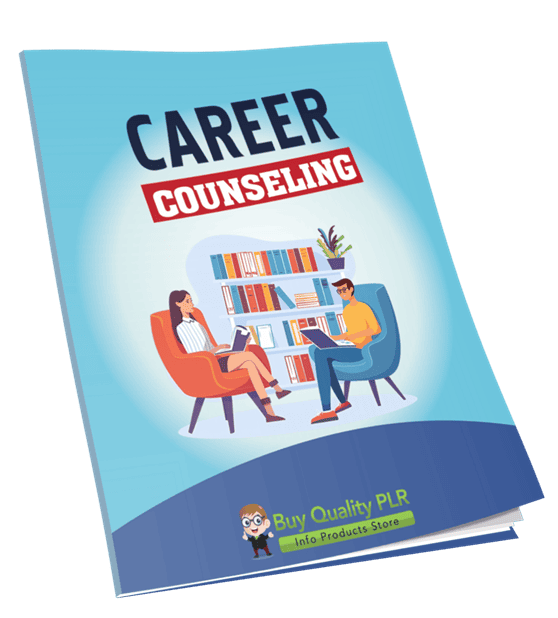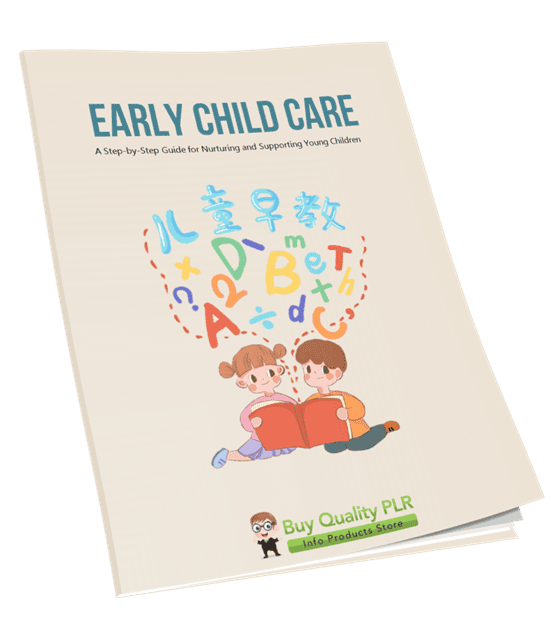
Early Child Care PLR Course 26k Words
in Kids PLR Ebooks , PLR Checklists , PLR eBooks , Premium PLR , Premium PLR eBooks , Premium PLR Reports , Premium White Label Brandable PLR Coaching Courses , Private Label Rights ProductsChoose Your Desired Option(s)
has been added to your cart!
have been added to your cart!
#earlychildcare #childdevelopment #parentingtips #childcarecourse #plrcontent #educationplr #parentingplr #daycaretips #toddlercare #momlife
Parenting and caregiving during the early years is a journey filled with milestones, learning, and growth. The Early Child Care PLR Course is designed to empower parents, caregivers, and educators with the essential knowledge and practical tools they need to foster the development of young children. Whether you’re preparing to care for your own child or expanding your expertise in early childhood education, this comprehensive guide covers every aspect of early childhood development.
This course takes you through understanding child development, creating a safe environment, communication strategies, nutrition, and building positive relationships with families. By the end of this course, you’ll have the tools to provide effective, compassionate, and informed care for children during their formative years. Ready to make a lasting impact on the lives of children? Let’s dive in!
Presenting…
Early Child Care PLR Course 26k Words
What’s Included in the Course:
This course is divided into 5 modules, each designed to provide caregivers with a detailed, actionable framework for every aspect of child care. The content includes in-depth guidance on both practical techniques and theoretical knowledge about child development, making it easy to implement and understand.
Module 1: Understanding Early Childhood Development
💡 Goal: Build a foundational understanding of how children grow and develop from birth to 5 years.
This module provides the groundwork for understanding the complexities of early childhood development. We dive into the stages of development across multiple domains—physical, cognitive, emotional, and social—so you can be informed as you care for and guide children in their early years.
- Step 1: The Basics of Child Development
Learn about the key milestones in physical, emotional, cognitive, and social development from birth to 5 years. This understanding will help you track a child’s progress and identify any developmental delays. - Step 2: How Children Learn and Explore
Explore the concept of learning through play, and how children use their senses to explore the world around them. We provide insights on how you can create learning opportunities in everyday activities. - Step 3: Recognizing Individual Differences
Understand how each child grows at their own pace. Learn how to respect and support these differences, ensuring each child receives the care and attention they need. - Step 4: Building Secure Attachments
Discover the importance of creating strong emotional bonds with children, which helps foster trust and emotional security, essential for their future relationships and development.
Module 2: Creating a Safe and Stimulating Environment
💡 Goal: Set up an environment that nurtures children’s growth, encourages learning, and keeps them safe.
This module covers the essentials of childproofing and creating a stimulating environment that fosters a child’s learning, creativity, and safety. It guides you on creating a space that feels secure and promotes both independence and exploration.
- Step 1: Childproofing Your Space
Learn how to identify potential hazards and make your home or childcare setting safe for little ones. This includes everything from securing furniture to installing safety gates. - Step 2: Choosing Age-Appropriate Toys and Activities
Discover how to choose toys and activities that not only entertain but also promote growth, learning, and creativity. The right toys can spark a child’s imagination and cognitive development. - Step 3: Designing Daily Routines
Creating predictable routines helps children feel secure and understand what to expect. Learn how to design routines that balance play, rest, meals, and educational activities. - Step 4: Encouraging Positive Behavior
Setting boundaries is important for healthy development. Explore gentle strategies for guiding children towards positive behaviors and teaching them how to interact respectfully with others.
Module 3: Nutrition and Health for Young Children
💡 Goal: Provide children with the nutrition and health support they need to grow and thrive.
This module delves into the vital role of nutrition, hygiene, and health care for young children. A child’s diet and health practices in the early years can have a lasting impact on their overall well-being, so it’s essential to get this right.
- Step 1: Essential Nutrients for Growing Kids
Learn about the essential nutrients that children need for growth and development. We cover everything from vitamins and minerals to the best food sources of protein, healthy fats, and carbohydrates. - Step 2: Handling Allergies and Special Diets
This section addresses how to manage food allergies and accommodate special dietary needs, whether your child has lactose intolerance or requires a gluten-free diet. - Step 3: Recognizing Signs of Illness
Confidence is key when it comes to health. This section provides you with the knowledge you need to recognize common childhood illnesses and know when it’s time to seek medical attention. - Step 4: Promoting Hygiene and Healthy Habits
Teach children the importance of good hygiene habits like washing hands and brushing teeth. Learn fun ways to incorporate these habits into everyday routines to ensure they stick.
Module 4: Effective Communication with Children
💡 Goal: Master the art of communication with children to foster emotional intelligence and strong relationships.
Communication is the cornerstone of healthy child development. In this module, we explore how to communicate effectively with children at every developmental stage, from infants to preschoolers.
- Step 1: Talking to Little Ones (Even Before They Can Talk Back)
Understand how to communicate with babies and toddlers in a way that nurtures language development. Learn strategies for talking to infants, even before they can speak their first words. - Step 2: Active Listening for Young Minds
Active listening is essential for emotional connection. Discover how to practice active listening techniques that help children feel heard and understood, fostering self-esteem and trust. - Step 3: Encouraging Expression and Empathy
Help children understand and express their feelings. Learn how to encourage empathy for others and support children in developing emotional intelligence through conversation and role-playing. - Step 4: Managing Tantrums with Care
Tantrums are a natural part of child development, and learning how to handle them calmly is a vital skill. This step provides techniques to manage tantrums and teach children how to self-regulate.
Module 5: Building Positive Relationships with Families
💡 Goal: Foster strong partnerships with families to ensure a supportive environment for children’s growth.
Parents and caregivers are partners in the child’s journey. This module focuses on how to build strong, trusting relationships with families, manage conflicts, and support parents in their role.
- Step 1: Open and Honest Communication with Parents
Effective communication is key to maintaining a positive relationship with parents. Learn how to keep them informed about their child’s development, challenges, and successes. - Step 2: Understanding Cultural Differences
Learn to respect and adapt to the diverse cultural backgrounds of families. This knowledge will help you provide more inclusive care that honors each child’s unique cultural context. - Step 3: Handling Conflicts with Grace
Disagreements or misunderstandings can happen. This section offers strategies for addressing conflicts with parents or other caregivers in a professional and empathetic manner. - Step 4: Creating a Partnership for Growth
Collaborate with parents to set development goals for their child. Celebrate milestones together and ensure that the child’s needs are met both at home and in your care.
Bonus Materials Included:
- Early Child Care Checklist (529 Words)
A quick reference guide summarizing the essential points of the course for easy access. - Early Child Care FAQs (656 Words)
Answering common questions and providing additional tips to enhance your caregiving experience. - Early Child Care Salespage (846 Words)
A professionally crafted sales page to help you market this course.
How to Profit from This Course:
This Early Child Care PLR Course offers you multiple ways to profit:
- Sell the Course Directly: You can sell this course to parents, caregivers, and childcare professionals looking to improve their skills and knowledge in early childhood development.
- Bundle the Course: Combine this course with other parenting or childcare resources to create higher-value bundles.
- Membership Sites: Turn this course into a membership site offering ongoing tips, webinars, and resources to parents or childcare providers.
- Create a Video Course: Break down the course into video content and sell it at a premium price.
- Affiliate Marketing: Use the course as a lead magnet and promote it through affiliate marketing channels to generate more sales.
Licensing Terms:
With this PLR Course, you have the right to:
- Sell it as-is or customize it to fit your brand.
- Break it into smaller pieces and sell as reports for $10-$20 each.
- Bundle it with other products to create higher-value offerings ($47-$97).
- Create a membership site or eClass and generate recurring revenue.
What You Can’t Do:
- Resell PLR rights or relicense the content.
- Give it away for free in its entirety (you can use excerpts for lead magnets or blog posts).
- Offer 100% commission to affiliates; you can offer up to 75% commission.
Start Making a Positive Impact on Children’s Lives Today!
Equip yourself with the knowledge and skills to become a confident and informed caregiver. Click here to purchase the Early Child Care PLR Course for just $14.99 and start making a difference in the lives of children and their families.
has been added to your cart!
have been added to your cart!
Here A Sample of Early Child Care PLR Course
This course is designed to empower caregivers and parents with the knowledge, skills, and confidence to nurture and support children in their early years. Let’s dive into this exciting journey together!
Module 1: Understanding Early Childhood Development
Step 1: The Basics of Child Development
Understanding Key Milestones in Physical, Emotional, Cognitive, and Social Development from Birth to 5 Years
Child development in the early years sets the foundation for lifelong growth and learning. In this step, we will explore the key developmental milestones in four crucial areas: physical, emotional, cognitive, and social development. These milestones provide a roadmap to understanding typical growth patterns, helping you recognize and support children’s progress effectively.
1. Physical Development Milestones
Description: Physical development refers to the growth and refinement of motor skills, body movement, and overall physical coordination.
Key Milestones:
- Birth to 6 months: Reflexive movements dominate (e.g., grasping, rooting), followed by improved head control and beginning to roll over.
- 6 to 12 months: Sitting without support, crawling, and possibly standing with assistance. By the end of this stage, some children may take their first steps.
- 1 to 3 years (toddler): Rapid improvement in gross motor skills like walking, running, and climbing. Fine motor skills such as stacking blocks and grasping small objects develop.
- 3 to 5 years (preschool): Increased physical coordination, the ability to hop, skip, and throw a ball, and refined fine motor skills such as drawing shapes and using utensils.
Instruction for Educators:
- Create a safe, engaging environment for children to practice motor skills.
- Introduce age-appropriate toys like rattles, building blocks, and puzzles to support both gross and fine motor skills.
- Observe each child’s physical abilities and note any delays for follow-up with a healthcare professional if necessary.
2. Emotional Development Milestones
Description: Emotional development involves children’s ability to identify, express, and regulate their emotions, forming a sense of security and self-awareness.
Key Milestones:
- Birth to 6 months: Responding to comfort, expressing basic emotions like happiness or distress, and forming attachment to caregivers.
- 6 to 12 months: Demonstrating stranger anxiety, recognizing familiar faces, and showing affection.
- 1 to 3 years: Starting to assert independence while experiencing frequent emotional outbursts (e.g., tantrums). Learning basic emotion words like “happy” or “sad.”
- 3 to 5 years: Beginning to manage emotions, develop self-confidence, and show empathy toward others.
Instruction for Educators:
- Provide consistent, nurturing care to foster secure attachments.
- Model emotional expression and help children label their feelings (e.g., “I see you’re upset because you can’t find your toy”).
- Encourage independence while setting appropriate boundaries for emotional safety.
3. Cognitive Development Milestones
Description: Cognitive development encompasses how children learn, think, problem-solve, and process information.
Key Milestones:
- Birth to 6 months: Sensory exploration (e.g., gazing at objects, tracking movement), recognizing caregivers, and responding to their environment.
- 6 to 12 months: Beginning object permanence (understanding that objects exist even when out of sight), exploring cause-and-effect relationships (e.g., dropping objects to see them fall).
- 1 to 3 years: Developing language skills, solving simple puzzles, and demonstrating curiosity by asking “why” and “how” questions.
- 3 to 5 years: Improved memory, imagination, and logical reasoning; engaging in pretend play; and grasping basic concepts like counting and time.
Instruction for Educators:
- Stimulate curiosity with interactive activities like storytelling, sorting games, and simple experiments.
- Provide opportunities for exploration and problem-solving in a structured yet flexible environment.
- Encourage language development by engaging in meaningful conversations and reading together daily.
4. Social Development Milestones
Description: Social development refers to how children interact with others, build relationships, and develop social skills.
Key Milestones:
- Birth to 6 months: Smiling, cooing, and responding to caregiver interaction.
- 6 to 12 months: Beginning to engage in back-and-forth play (e.g., peek-a-boo) and showing preference for familiar people.
- 1 to 3 years: Parallel play (playing near other children but not with them), learning to share, and developing friendships.
- 3 to 5 years: Cooperative play, following rules in group activities, and showing understanding of social norms like taking turns and saying “please” and “thank you.”
Instruction for Educators:
- Facilitate opportunities for social interaction through group play and cooperative activities.
- Teach and model prosocial behaviors such as sharing, kindness, and conflict resolution.
- Recognize and address any challenges in social interactions, such as extreme shyness or difficulty following social cues.
Bringing It All Together
In this step, you will:
- Observe the children in your care to identify where they are in their developmental journey.
- Adapt your teaching methods to align with their current abilities and support growth in each developmental area.
- Document progress and communicate it with parents and caregivers to foster a collaborative support system.
- Refer to resources or professionals when a child shows significant delays in any area of development.
By understanding these key milestones, you’ll be well-equipped to nurture young children and help them achieve their full potential.
Step 2: How Children Learn and Explore
Exploring the Concept of Learning Through Play and How Children Use Their Senses to Make Sense of the World
Young children are natural explorers. They learn by observing, interacting, experimenting, and using their senses to engage with the world around them. This step delves into the importance of learning through play, the role of sensory experiences, and how educators and caregivers can foster these processes.
1. Understanding Learning Through Play
Description: Play is not just a leisure activity for children—it is the cornerstone of their learning and development. Through play, children acquire critical skills like problem-solving, creativity, communication, and social interaction.
Key Points:
- Why Play Matters: Play stimulates the brain and helps children make connections between their experiences and their understanding of the world.
- Types of Play: Include free play (unstructured, child-led) and structured play (guided by an adult with specific goals, like puzzles or educational games).
- Stages of Play: From solitary play in infancy to cooperative play in preschool years, understanding the stages helps educators provide appropriate activities.
Instruction for Educators:
- Observe children during play to understand their interests and developmental levels.
- Offer a balance of free play and structured activities to encourage exploration and learning.
- Rotate toys and materials to keep play environments fresh and engaging.
2. The Role of Sensory Experiences in Learning
Description: Children use their senses—sight, sound, touch, taste, and smell—to process information and understand their environment. Sensory exploration enhances cognitive, physical, and emotional development.
Key Points:
- Sight: Recognizing colors, shapes, and patterns builds visual discrimination skills.
- Sound: Listening to different sounds or music supports auditory processing and language development.
- Touch: Exploring textures helps develop fine motor skills and an understanding of different materials.
- Taste and Smell: Experiencing a variety of tastes and smells enhances sensory awareness and preferences.
Instruction for Educators:
- Incorporate sensory-rich materials like sand, water, playdough, and textured fabrics into daily activities.
- Use multi-sensory approaches during lessons, such as storytelling with props or music with movement.
- Be mindful of sensory sensitivities and adapt activities for children with sensory processing challenges.
3. Encouraging Curiosity and Exploration
Description: Children are inherently curious, and exploration is their way of finding answers to questions they may not yet articulate. Encouraging exploration builds confidence and problem-solving skills.
Key Points:
- Providing Choices: Allow children to choose from various activities and materials, empowering them to direct their learning.
- Outdoor Exploration: Nature offers endless opportunities for sensory experiences and discovery. Activities like digging in the soil, observing insects, or feeling the texture of leaves are valuable.
- Safe Risk-Taking: Encourage children to try new things, such as climbing a low obstacle or experimenting with mixing colors.
Instruction for Educators:
- Set up open-ended exploration stations, such as a sensory bin or a “discovery table” with magnifying glasses and natural objects.
- Ask open-ended questions like, “What do you think will happen if…?” to spark critical thinking.
- Offer gentle guidance while allowing children to find solutions on their own.
4. Designing Learning Through Play Activities
Description: Intentional play-based activities can help children learn concepts in a fun and engaging way. Designing these activities requires creativity and alignment with children’s developmental stages.
Key Points:
- Imaginative Play: Role-playing games like “pretend grocery store” or “doctor’s office” develop social skills, vocabulary, and problem-solving.
- Construction Play: Building with blocks or creating structures with loose parts encourages spatial awareness and engineering thinking.
- Creative Play: Activities like painting, crafting, or singing nurture self-expression and fine motor skills.
- Physical Play: Games like running, jumping, or dancing build gross motor skills and coordination.
Instruction for Educators:
- Tailor activities to suit the age group and interests of the children.
- Provide a variety of materials that encourage creativity and problem-solving (e.g., cardboard boxes, art supplies, building blocks).
- Observe and adapt activities based on the child’s response, ensuring all children feel engaged and successful.
Bringing It All Together
In this step, you will:
- Understand the Role of Play: Recognize that play is a child’s primary mode of learning.
- Incorporate Sensory Experiences: Use hands-on activities to help children engage their senses.
- Foster Exploration: Create a safe and stimulating environment where curiosity thrives.
- Plan and Reflect: Design activities that align with developmental goals and reflect on their impact.
By focusing on how children learn and explore, educators can create enriched environments that allow children to thrive, discover, and grow into confident learners.
Step 3: Recognizing Individual Differences
Learning How Every Child Grows at Their Own Pace and How to Respect and Support These Differences
Children develop in unique ways, shaped by their genetics, environment, and experiences. Recognizing and respecting these individual differences is crucial for creating an inclusive, supportive environment where every child can thrive. This step provides detailed guidance on understanding developmental variations, identifying strengths and needs, and fostering an individualized approach to early childhood care.
1. Understanding Developmental Variations
Description: Developmental milestones provide general guidelines for growth, but each child progresses at their own pace. Recognizing these variations helps educators and caregivers set realistic expectations.
Key Points:
- Developmental Domains: Physical, cognitive, emotional, and social growth occur in interconnected yet individualized ways.
- Variation Is Normal: Some children may excel in certain areas (e.g., language) while taking longer in others (e.g., motor skills).
- Influencing Factors: Genetics, cultural background, family environment, and access to resources all contribute to individual differences.
Instruction for Educators:
- Observe children regularly to understand their unique developmental trajectories.
- Use developmental milestones as a reference, not a rigid standard.
- Avoid comparisons between children, as each child’s growth is distinct.
2. Identifying Strengths and Needs
Description: Recognizing both a child’s strengths and areas of need allows for tailored support and encouragement.
Key Points:
- Strength-Based Approach: Focus on what the child can do rather than what they cannot. For example, if a child struggles with fine motor tasks but excels at storytelling, integrate oral storytelling into activities.
- Areas of Need: Identifying challenges early (e.g., difficulty with social interactions or delayed speech) can lead to timely interventions.
- Cultural and Environmental Factors: Consider how a child’s background influences their development, behavior, and learning style.
Instruction for Educators:
- Conduct regular, informal assessments of each child’s skills and preferences.
- Collaborate with parents and caregivers to gain insights into the child’s home environment and routines.
- Document observations and seek professional input when concerns about developmental delays arise.
3. Respecting and Valuing Diversity
Description: Celebrating diversity in abilities, backgrounds, and learning styles enriches the learning environment for all children.
Key Points:
- Cultural Diversity: Children from different cultures may exhibit unique behaviors, communication styles, or preferences. Recognize and honor these differences.
- Learning Styles: Some children learn better through visual aids, while others thrive in hands-on or auditory activities.
- Inclusion: Ensure all children, including those with special needs, feel valued and supported.
Instruction for Educators:
- Integrate multicultural elements into lessons and activities, such as stories, songs, and celebrations.
- Offer various learning materials and methods to cater to diverse preferences and abilities.
- Foster an inclusive classroom culture by teaching empathy and respect among peers.
4. Adapting Support to Meet Individual Needs
Description: Tailored support ensures that each child receives the guidance and encouragement they need to succeed, regardless of their starting point.
Key Points:
- Differentiated Instruction: Adjust activities to suit varying ability levels. For example, during art time, one child may draw with crayons while another practices cutting with safety scissors.
- Flexible Goals: Set realistic, individualized goals based on the child’s current abilities and potential for growth.
- Collaboration: Work with families, therapists, and other professionals to create a comprehensive support plan for children with additional needs.
Instruction for Educators:
- Break down activities into smaller, manageable steps to support children who may struggle.
- Provide additional resources or assistance (e.g., visual aids, one-on-one guidance) for children requiring extra help.
- Regularly review and adjust plans to align with the child’s progress and emerging interests.
Bringing It All Together
In this step, you will:
- Recognize Developmental Variability: Understand that every child grows at their own pace and in their unique way.
- Identify and Support Strengths: Emphasize what children can do while addressing areas where they need help.
- Celebrate Diversity: Create an environment where cultural, developmental, and learning differences are valued.
- Adapt and Adjust: Tailor your teaching and caregiving approach to meet the individual needs of every child.
By respecting and supporting individual differences, you contribute to the holistic growth and well-being of the children in your care, helping them build confidence, resilience, and a love for learning.
Step 4: Building Secure Attachments
Understanding the Importance of Creating Strong Emotional Bonds with Children to Foster Trust and Security
Secure attachments are the foundation for a child’s emotional, social, and cognitive development. These attachments are built through consistent, responsive, and nurturing interactions between a caregiver and a child. This step outlines the process of fostering strong emotional bonds, emphasizing the significance of trust and security in early childhood.
1. The Science of Secure Attachments
Description: Secure attachments are formed when children feel safe, understood, and valued. These bonds provide a stable base for exploration and learning.
Key Points:
- Attachment Theory: Proposed by psychologist John Bowlby, this theory highlights that early emotional bonds significantly impact a child’s relationships and behavior throughout life.
- Role of Caregivers: Caregivers who consistently respond to a child’s needs help build trust and emotional security.
- Benefits of Secure Attachments: Children with strong attachments are more likely to exhibit confidence, empathy, and resilience.
Instruction for Educators:
- Learn to recognize attachment cues, such as a child seeking comfort or attention.
- Respond promptly and calmly to children’s needs, even during challenging behaviors.
- Create a predictable and stable environment to reinforce feelings of safety.
2. Communicating Warmth and Responsiveness
Description: Children thrive in environments where they feel loved and respected. Warm, responsive interactions are essential for building trust.
Key Points:
- Verbal Communication: Use kind, reassuring words to comfort and guide children. For example, “I see you’re upset. Let’s talk about it.”
- Non-Verbal Cues: Maintain eye contact, use gentle touches, and smile often to convey warmth.
- Active Listening: Show that you value their thoughts and feelings by giving them your full attention when they communicate.
Instruction for Educators:
- Set aside time for one-on-one interactions with each child, such as reading a book together or sharing a conversation.
- Be patient and empathetic when a child is upset, helping them label and understand their emotions.
- Avoid dismissing a child’s feelings; instead, validate their experiences by saying, “It’s okay to feel this way.”
3. Consistency and Predictability in Care
Description: Consistency in caregiving routines builds trust, as children learn what to expect and feel secure in their environment.
Key Points:
- Routine: Regular schedules for meals, naps, and activities help children feel safe and grounded.
- Transitions: Prepare children for changes, such as saying, “In five minutes, we’ll clean up and go outside.”
- Follow-Through: Keep promises to show children that they can rely on you. For example, if you say you’ll help them with a puzzle, ensure you follow through.
Instruction for Educators:
- Use visual schedules or routine charts to help children understand their day.
- Be patient during transitions, offering support and reassurance if a child feels anxious about a new activity.
- Stay calm and composed, as children often mirror the emotional states of trusted adults.
4. Encouraging Emotional Expression and Empathy
Description: Helping children express their emotions and understand others’ feelings fosters deeper emotional connections and builds a strong sense of security.
Key Points:
- Naming Emotions: Teach children to identify and name their emotions. For example, “It looks like you’re feeling frustrated because the block tower fell.”
- Modeling Empathy: Demonstrate empathy by acknowledging their feelings and showing compassion.
- Problem-Solving Together: Encourage children to express their needs and work with them to find solutions.
Instruction for Educators:
- Provide tools like emotion charts or storybooks to help children explore feelings.
- Create role-play scenarios where children can practice showing empathy, such as taking care of a pretend pet.
- Offer positive reinforcement when children express their emotions constructively, saying things like, “I’m proud of you for using your words to tell me how you feel.”
Bringing It All Together
In this step, you will:
- Understand the Importance of Secure Attachments: Learn how emotional bonds shape a child’s trust and emotional well-being.
- Communicate with Warmth: Use verbal and non-verbal cues to make children feel valued and understood.
- Build Trust Through Consistency: Establish routines and follow through on promises to create a stable environment.
- Promote Emotional Understanding: Encourage children to express feelings and practice empathy.
By building secure attachments, caregivers and educators create a strong foundation for a child’s growth and development. These emotional bonds enable children to explore the world with confidence, develop healthy relationships, and manage challenges with resilience.
We’re also giving these extra bonuses
Early Child Care – Checklist
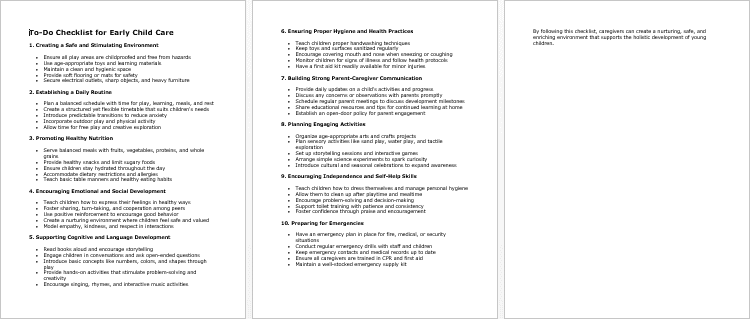
Early Child Care – FAQs
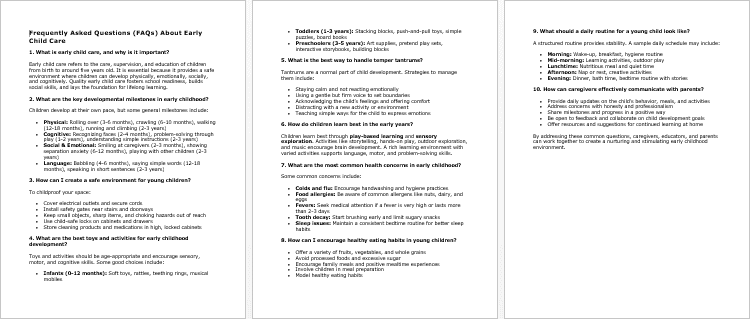
Early Child Care – Salespage Content

Package Details:
Word Count: 24 361 Words
Number of Pages: 101
Early Child Care – Bonus Content
Checklist
Word Count: 529 words
FAQs
Word Count: 656 words
Salespage Content
Word Count: 846 words
Total Word Count: 26 392 Words
Your PLR License Terms
PERMISSIONS: What Can You Do With These Materials?
Sell the content basically as it is (with some minor tweaks to make it “yours”).
If you are going to claim copyright to anything created with this content, then you must substantially change at 75% of the content to distinguish yourself from other licensees.
Break up the content into small portions to sell as individual reports for $10-$20 each.
Bundle the content with other existing content to create larger products for $47-$97 each.
Setup your own membership site with the content and generate monthly residual payments!
Take the content and convert it into a multiple-week “eclass” that you charge $297-$497 to access!
Use the content to create a “physical” product that you sell for premium prices!
Convert it to audios, videos, membership site content and more.
Excerpt and / or edit portions of the content to give away for free as blog posts, reports, etc. to use as lead magnets, incentives and more!
Create your own original product from it, set it up at a site and “flip” the site for megabucks!
RESTRICTIONS: What Can’t You Do With These Materials?
To protect the value of these products, you may not pass on the rights to your customers. This means that your customers may not have PLR rights or reprint / resell rights passed on to them.
You may not pass on any kind of licensing (PLR, reprint / resell, etc.) to ANY offer created from ANY PORTION OF this content that would allow additional people to sell or give away any portion of the content contained in this package.
You may not offer 100% commission to affiliates selling your version / copy of this product. The maximum affiliate commission you may pay out for offers created that include parts of this content is 75%.
You are not permitted to give the complete materials away in their current state for free – they must be sold. They must be excerpted and / or edited to be given away, unless otherwise noted. Example: You ARE permitted to excerpt portions of content for blog posts, lead magnets, etc.
You may not add this content to any part of an existing customer order that would not require them to make an additional purchase. (IE You cannot add it to a package, membership site, etc. that customers have ALREADY paid for.)
Share Now!



